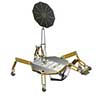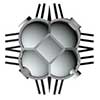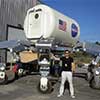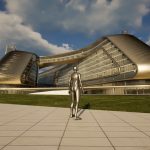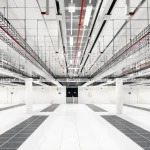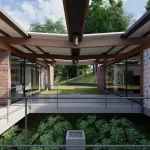SinterHab, 3D Printed Moon Base Concept, Conceptual Architecture Design, Images, Space
SinterHab Moon Base : Design Concepts
Lunar Dust Building design by Architecture Et Cetera (A-ETC)
21 Feb 2013
SinterHab 3D Printed Moon Base
Design: Architecture Et Cetera (A-ETC)
Large NASA spider robots could build 3D printed Moon Base concept SinterHab just by using microwaves and solar energy
Imagine that you took the solar energy and the dust from the ground and baked the dust using microwaves to directly construct any shape you wanted. On Earth, that would sound like science fiction but on the Moon it would be quite feasible due to the unique properties of the lunar soil. Microwave sintering creates a solid building material purely by microwave heating of the dust.
SinterHab Moon Base Design Concepts:
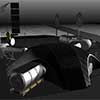
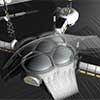
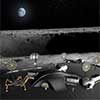
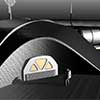
pictures from architect
SinterHab is a concept of a 3D printed module of a Lunar South Pole base that shows the potential of 3D microwave printing technology of NASA. It would be constructed from lunar dust by microwave sintering and contour crafting by NASA JPL robotics system near Shackleton crater. Robots equipped with this technology would basically bake the lunar dust without any necessary glue that would need to be imported from Earth.
Project SinterHab was originally started at International Space University by space architects Tomas Rousek, Katarina Eriksson and Dr. Ondrej Doule in collaboration with scientists from NASA JPL in 2009. London-based space architect Tomas Rousek, director of A-ETC.net, then carried out an internship with the NASA Habitation team at NASA JPL in Los Angeles where he worked with authors of this 3D printing robotics system. The SinterHab project was first introduced to the scientific community at the International Astronautical Congress 2010 and in the leading aerospace journal Acta Astronautica in 2012. Scientists from NASA JPL have used SinterHab as an example in proposal for funding the development of this microwave sintering technology.
Due to the nano-sized iron particles in the lunar dust produced by space weathering, it is possible to heat the dust up to 1200 – 1500 0C and melt it even in a domestic microwave oven. When the lunar dust is heated and the temperature is maintained below the melting point, particles bond together and the building blocks for the lunar habitat can be created. In the future, we could build structures of entire cities on the surface of the Moon just by using solar energy. We can significantly decrease mass, costs and environmental impact if we don’t need to send this binding agent from Earth. Furthermore, the hardening of the surrounding surface of the base would help mitigate the hazards of contamination from lunar dust, which is highly abrasive and harmful to both astronauts and equipment.
An innovative internal membrane system of SinterHab offers up to four times bigger volume of the module than classic rigid modules at the same weight imported from Earth. Nature provides inspiration for inflatable structures in the form of foam bubbles.
The intention of building several compartments with sintered walls led to a design based on the geometry of bubbles, where the forces of neighbouring bubbles are in equilibrium and enable the building of flat walls It would be possible to make the modules large enough to accommodate even a green garden that recycles air and water for the lunar outpost. The radiation shielding is provided by regolith structure, polymer layers of inflatable membrane and water tanks in critical places.
Scientists at NASA JPL proposed the Sinterator system, a giant six-legged multi-purpose robot called ATHLETE holding microwave printer head that would create walls and domes. The lunar dust (regolith) would be excavated and manipulated by Chariot rover in bulldozer configuration. A prototype of the ATHLETE robot has already been built and tested in Arizona Desert for various tasks, such as moving habitats and using different tools.
SinterHab 3D Printed Moon Base information / imagges received from A-ETC
Location: Atlantic Ocean
Architectural Concept Designs – Selection
Wave Tower Design

picture from architect
Hanging Tower

image © Stephan Sobl
Metropolitan Vertical Theme Park
3D Printed Design
3d Printed Dichroic LED concentrator light
Design: Dr. Margot Krasojevic
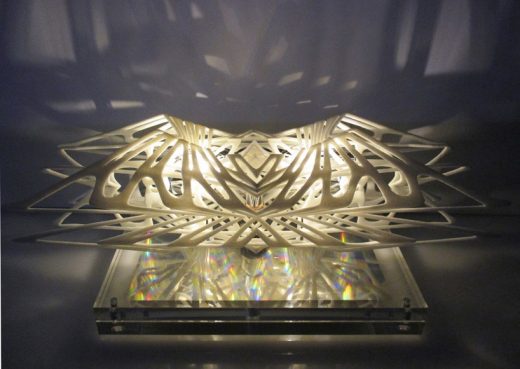
image from architect
3d Printed Dichroic Light Diffuser
3D-printed Polymer Building
Design: Skidmore, Owings & Merrill (SOM) architects with Oak Ridge National Laboratory
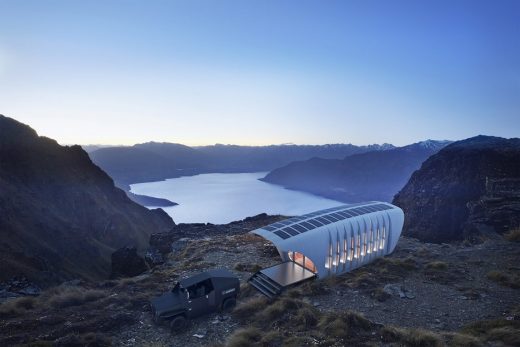
image from architects
3D-printed structure by SOM
Dutch EU building 3D-printed Facade
Facade of Dutch EU building uses 3D-printed bioplastic
3D Printed Houses
3D Printed Houses
Dr. Peter Magyar Posts
Architecture Articles by Dr. Peter Magyar
Comments / photos for the SinterHab 3D Printed Moon Base Design page welcome

